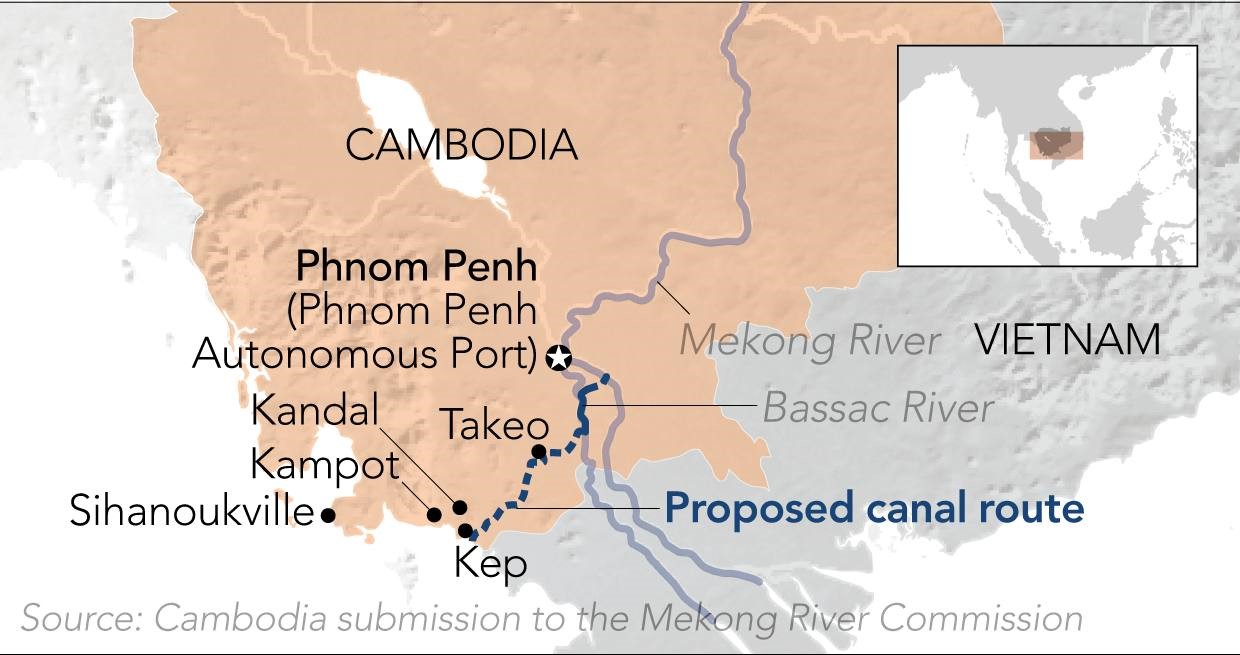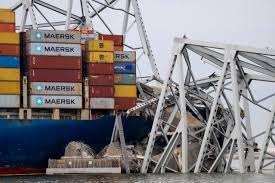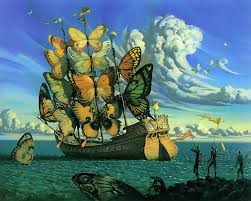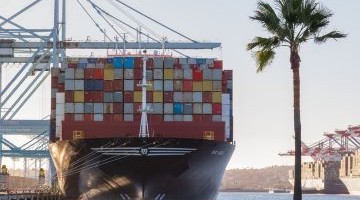Maritime Transit Corridors – think canals and land bridges – have made world trade go round – or rather, enabled it to not go around. The Panama canal saves 15,000 km when sailing between one contiguous US coast to the other; the Suez canal saves 8,900 km when sailing between the Arabian Sea and London; somewhat earlier, China’s Grand Canal, digging of which began in perhaps the 5th century BCE, consisted of more than 2,000 km of artificial waterways linking five of China’s main river basins by the 13th century CE. All massive construction costs, massive payback and in need of massive political will to even get started.
More recent and more modest proposals include:
The Kanal Istanbul, since superseded by Russia’s invasion of Ukraine.

All well and good, if pretty implausible, but there is plenty of resistance to the project from Vietnam, from the perhaps 1.6 million people who live along the route, from the environmental lobby, and surely from the Mekong River Commission. And what would the revenue line look like? The principal rationale is to break the dependence on Vietnam in getting to the open sea, which does pose a political risk of sorts, but tariffs saved and expected tonnages have not been released. And external benefits for canals such as opening up access to real estate are nothing like as big as they are for road or rail.


So, revenue risk for MTCs is the main uncertainty but it is not just expected volumes that are the concern, it is also their vulnerability to disruption. The Panama canal is currently short of water to supply its locks; three years ago, the Suez canal was blocked by the Ever Given for six days and transiting through Suez currently risks being attacked by the hitherto largely ignored Houthis such that going around CGH now costs 22% more when coming from the Persian Gulf / 50% more when coming from Asia. The Dali hitting the Francis Scott Key (he wrote the lyrics for the Star Spangled Banner) bridge in Baltimore last month (sacrificial dolphins – not as politically incorrect as you might think – would have been a good idea) will close the harbour for at least two months but such accidents are not as rare as one might suppose – a 2018 report for the World Association for Waterborne Transport Infrastructure catalogued 35 major bridge collapses caused by boat strikes worldwide between 1960 and 2015, killing a total of 342 people.

All in all, these look like hopeless causes, retrievable only if China once more funds its contractors to build more uneconomic megaprojects under Belt & Road. But Beijing wised up a while ago. And even worthwhile MTCs need massive political backing. Host governments, driven by the Three -Ics (politics, optics and economics) would need to assemble a feasibility study then share (not necessarily publicly) the no doubt epic assumptions on which each was based. Logie Group has discreetly helped on such projects. Otherwise, they will remain Politically Originated Pie in the Sky.







